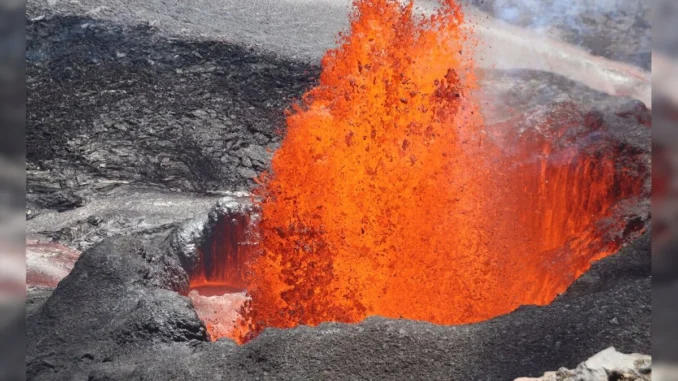
Honolulu, Hawaii – In a groundbreaking geological discovery, scientists have found compelling evidence that gold and other precious metals are seeping from Earth’s core, making their way to the surface through volcanic lava. This rare phenomenon was uncovered in Hawaii’s volcanic rocks, offering a new glimpse into the planet’s deep interior.
The research, led by scientists from Germany’s University of Göttingen, has been published in the prestigious journal Nature. The study reveals unusually high levels of ruthenium isotopes—a rare element typically found in the Earth’s core—suggesting that the lava erupting in Hawaii has originated from much deeper within the Earth than previously thought.
A Hidden Treasure from the Deep Earth
According to the researchers, this deep-seated leakage brings gold and other precious metals along with it, effectively turning Earth’s interior into a natural treasure vault. The findings indicate that Earth’s core is no longer isolated—dense and molten materials from its depths are now rising through the mantle and reaching the surface.
“This discovery reshapes our understanding of the planet’s interior dynamics,” said Dr. Nils Mässling, the lead researcher. “It’s not just a scientific milestone—it could have major economic implications. This is like Earth slowly revealing its buried treasure.”
Geological and Economic Significance
Until now, the Earth’s core was believed to be completely sealed off from the surface, with only theoretical models hinting at occasional exchanges with the mantle. However, this new evidence of upward leakage confirms active geochemical communication between the core and the mantle, opening new avenues for studying the planet’s evolution.
This process, researchers believe, could be responsible for the formation of oceanic islands like Hawaii, where volcanic activity may bring up trace amounts of core-derived metals embedded in ancient lava flows.
Geologists emphasize that while the leakage of core materials is still limited and highly localized, the implications are global. The discovery could transform mineral exploration and mining, especially in volcanic regions where such elements might accumulate over millions of years.
A New Frontier in Earth Science
Although it remains unclear whether similar processes are occurring in other parts of the world, the Hawaiian case provides concrete evidence of core-mantle interaction. This opens a new frontier in Earth sciences, challenging long-held assumptions about the inaccessibility of the planet’s deepest layers.
“This research adds a new chapter to Earth’s history,” said Dr. Mässling. “It proves that our planet is not only the cradle of life but also a hidden reservoir of extraordinary wealth.”
As geoscientists continue to analyze this phenomenon, the findings may prompt a paradigm shift in how we study Earth’s interior, potentially influencing future mining strategies, energy resource management, and even our understanding of planetary formation.

Leave a Reply